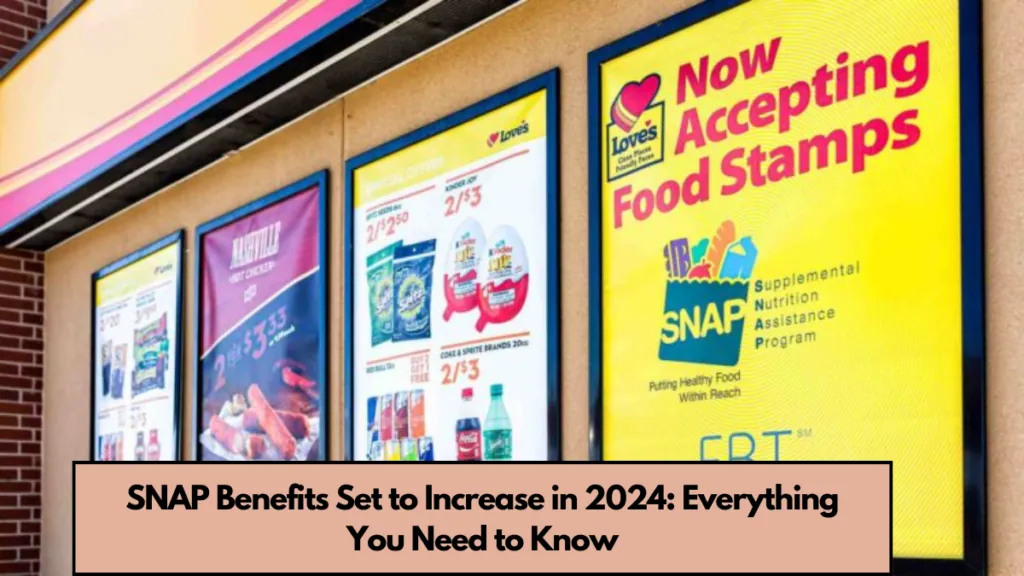The Supplemental Nutrition Assistance Program (SNAP), a crucial source of aid for millions of low-income households in the United States, will see an increase in benefits starting in October 2024. This adjustment, initiated by the Food and Nutrition Service (FNS), will impact 49 states and U.S. territories, while one state will see a slight reduction in benefits. This article delves into the details of the increase, how it affects recipients, and what changes are coming for SNAP participants in the coming months.
Upcoming Increase in SNAP Benefits for Most States
This Article Includes
Starting October 1, 2024, SNAP beneficiaries across 49 states and U.S. territories will see a rise in their monthly benefits. The increase is part of a broader adjustment linked to the Cost of Living Adjustment (COLA), ensuring benefits keep up with inflation and rising living costs. However, it is important to note that this adjustment will remain in place until the next review, which is set for the 2026 fiscal year. No additional COLA changes are expected before that time.
For recipients, this increase will provide a modest but essential boost to monthly allocations. According to the Food Action and Research Center, approximately 36% of households receiving SNAP benefits already obtain the maximum allotment available, and this number may grow with the new changes.
SNAP Eligibility and Distribution
SNAP benefits offer financial assistance to low-income families in all 50 states, Washington, D.C., and U.S. territories. Eligible households receive monthly payments via electronic benefit transfer (EBT) cards, which can be used at authorized retailers to purchase food. The benefits are intended to help participants afford healthier, nutrient-dense meals.
As of November 2022, around 41.9 million Americans—or about 12.5% of the total U.S. population—were benefiting from SNAP, according to data from the United States Department of Agriculture (USDA). The exact amount each household receives depends on their income and spending habits, with monthly payments ranging from $296 to $1,751, depending on household size and circumstances.
Payment Increases by State
While most states will experience an increase in SNAP benefits, the amount will vary depending on location. In the contiguous United States and Washington, D.C., the monthly benefit for a single-person household will increase slightly from $291 to $292. For a household of four, the amount will rise from $973 to $975.
However, adjustments in states like Alaska and Hawaii will differ. Alaska, in particular, will see significant variations based on whether the household is located in an urban or rural area. Below is a breakdown of the upcoming increases for selected states and territories:
Alaska:
- Urban areas:
- Single-person household: $377
- Four-person household: $1,258
- Rural areas (Type 1):
- Single-person household: $481
- Four-person household: $1,604
- Rural areas (Type 2):
- Single-person household: $586
- Four-person household: $1,953
Hawaii:
Hawaii is the only state where SNAP benefits will decrease. Single-person households will see a reduction in their benefits from $527 to $517, while four-person households will experience a $36 decrease, from $1,759 to $1,723.
Guam:
In Guam, the maximum monthly benefit for a single individual will increase from $430 to $431. A four-person household will see their maximum allotment rise from $1,434 to $1,437.
U.S. Virgin Islands:
In the U.S. Virgin Islands, the maximum monthly benefit for one-person households will increase slightly from $375 to $376. For a four-person household, the payment will increase from $1,251 to $1,254.
Understanding SNAP Eligibility and Application Process
To apply for SNAP benefits, individuals must meet certain criteria, including income and resource limits, which vary by state. Each state manages its own application process, though the program is federally funded and follows broad national guidelines. Applications are submitted in the state of residence, and eligibility is determined based on factors such as household size, income, and expenses.
Those interested in applying for SNAP should visit their state’s website or the USDA’s SNAP portal for more information on eligibility requirements and how to apply.
Conclusion
The upcoming SNAP benefit increases set to take effect in October 2024 will provide vital financial relief for millions of Americans struggling with rising food costs. While most states and territories will experience an increase, the changes highlight the varied nature of benefit adjustments across the country. For households depending on SNAP, this change offers an opportunity to better support their nutritional needs and maintain a healthy diet.
As inflation continues to challenge low-income families, these benefit increases will play a crucial role in helping them make ends meet. Beneficiaries should stay informed about their state’s specific changes and ensure they meet eligibility criteria to receive the full benefits they are entitled to.
